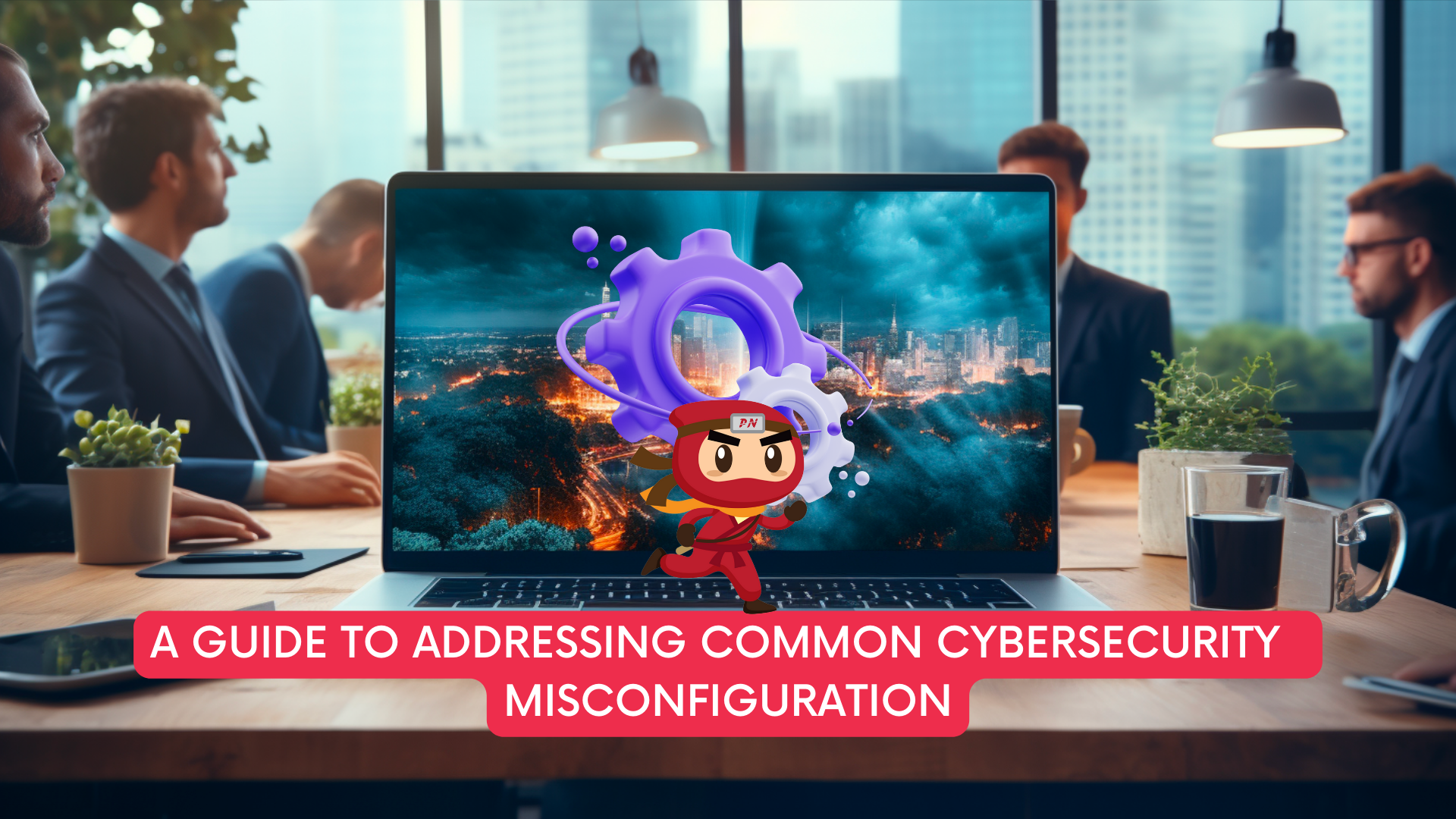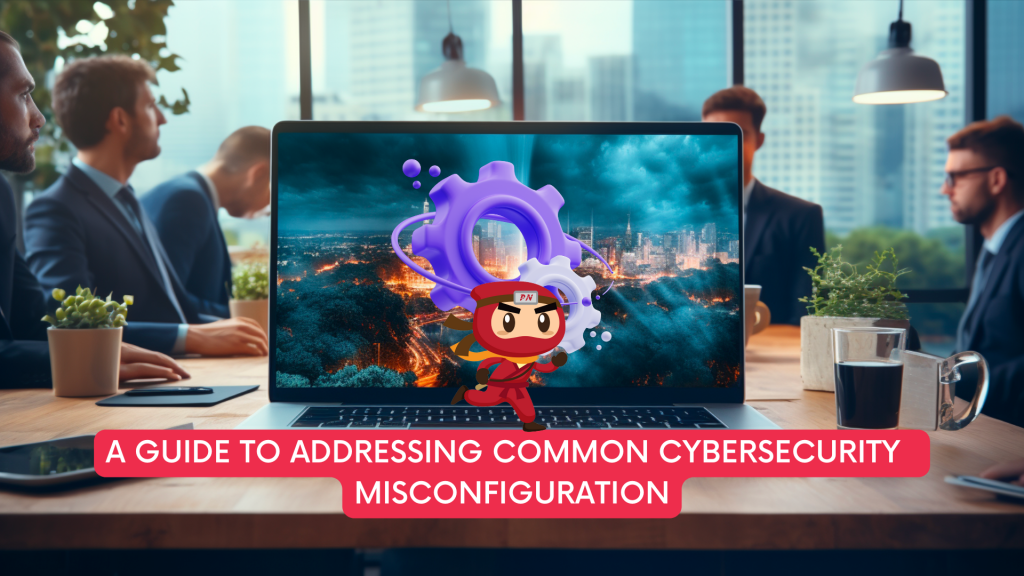KEEP IN TOUCH
Subscribe to our mailing list to get free tips on Data Protection and Cybersecurity updates weekly!







In the intricate realm of network security, understanding and mitigating common misconfigurations is pivotal to safeguarding organisations against cyber threats. As we explore prevalent cybersecurity challenges, this article sheds light on proactive measures and recommended mitigations to fortify defences and enhance overall cybersecurity.
1. Credential Management and Multi-Factor Authentication (MFA) Enhancement Weak credential practices and suboptimal MFA configurations expose organizations to unauthorized access. Strengthening credential management is vital. Enforcing MFA, particularly using phishing-resistant methods, and advocating for robust passwords or passphrases are indispensable measures for mitigating these risks.
2. Optimizing Default Settings in Software and Applications Default settings in software and applications can be exploited for unauthorized access. Mitigating vulnerabilities involves changing default credentials and fortifying configurations. Proactive management of these settings is crucial to bolstering overall security.
3. Securing Against Misconfigured Security Appliances Inadequately configured security appliances create openings for unauthorized traffic. Regular reviews, adjustments, and penetration testing are effective in detecting and addressing vulnerabilities, ensuring robust protection against potential threats.
4. Managing Open Ports and Unnecessary Services Unnecessary open ports and services increase the attack surface. Mitigating this risk involves deactivating unused services and enforcing stringent access controls. Proactive management of open ports is pivotal for minimizing potential security breaches.

5. Enhancing Security in Remote Access Weak remote access controls, like open RDP ports, pose significant threats. Implementing strong authentication, conducting regular updates, and enforcing effective access controls are paramount for securing remote access against potential vulnerabilities.
6. Securing Internet of Things (IoT) Devices Insecurely configured IoT devices can serve as entry points for threat actors. Improving IoT device security includes mandating strong passwords, ensuring regular firmware updates, and implementing network segmentation to restrict unauthorized access.
7. Ensuring Security in Cloud Services Insecure cloud configurations may lead to data breaches. Ensuring the security of cloud services involves regular auditing, strict access controls, and continuous monitoring to promptly detect and address potential vulnerabilities.
8. Preventing Unrestricted Code Execution Allowing arbitrary code execution poses a risk of running malicious payloads. To counter this, configuring system settings to prevent execution from untrusted sources is imperative for safeguarding against potential security threats.
9. Effective Patch Management Poor patch management practices expose systems to vulnerabilities. Regular updates, prioritizing patches, and avoiding unsupported or outdated software are critical measures to enhance the overall security posture.
10. Strengthening Access Control Lists (ACLs) on Network Shares and Services Misconfigured ACLs can grant unauthorized access to sensitive data. Applying the principle of least privilege (PoLP), enforcing strict Role-Based Access Control (RBAC), and automating verification processes enhance data security by minimizing the risk of unauthorized access.
11. Mitigating Circumvention of System Access Controls Threat actors may circumvent system access controls through compromised authentication methods. To mitigate this risk, limiting credential overlap and employing robust authentication practices are crucial steps in fortifying the security of system access controls.

12. Implementing Network Segmentation The absence of network segmentation allows threat actors to move freely across systems. Implementing proper segmentation and monitoring administrative accounts enhance network security by restricting unauthorized lateral movement.
13. Encrypting Data in Transit and at Rest Transmitting sensitive data without encryption and failing to encrypt data at rest leave information vulnerable. Implementing and adhering to strong encryption protocols is crucial for protecting data both in transit and at rest, ensuring comprehensive data security.
In conclusion, organisations must proactively address these common misconfigurations to fortify their network security. Implementing recommended mitigation measures, conducting regular assessments, and maintaining vigilant monitoring are essential practices to enhance security postures. By adopting a comprehensive approach, organisations can better protect against a myriad of cyber threats and fortify their resilience in the ever-evolving landscape of cybersecurity.
Your appointed DPO can work with you on your PDPA compliance, ensuring that there will be policies in place to make sure that the handling of personal data is PDPA compliant.
A Data Protection Officer (DPO) oversees data protection responsibilities and ensures that organisations comply with the Personal Data Protection Act (PDPA). Furthermore, every Organization’s DPO should be able to curb any instances of PDPA noncompliance as it is the officer responsible for maintaining the positive posture of an organisation’s cybersecurity.
DPOs complement organisations’ efforts to ensure that the organisation’s methods of collecting personal data comply with the PDPA. It also ensures that policies are set in place to make sure that there will be no instances of data breaches in the future.
Don’t wait any longer to ensure your organisation is PDPA compliant. Take our free 3-minute PDPA Compliance Self-audit checklist now, the same “secret weapon” used by our clients to keep them on track. Upon completion, we will send you the results so you can take the necessary action to protect your customers’ data. Complete the free assessment checklist today and take the first step towards protecting your customers’ personal data.